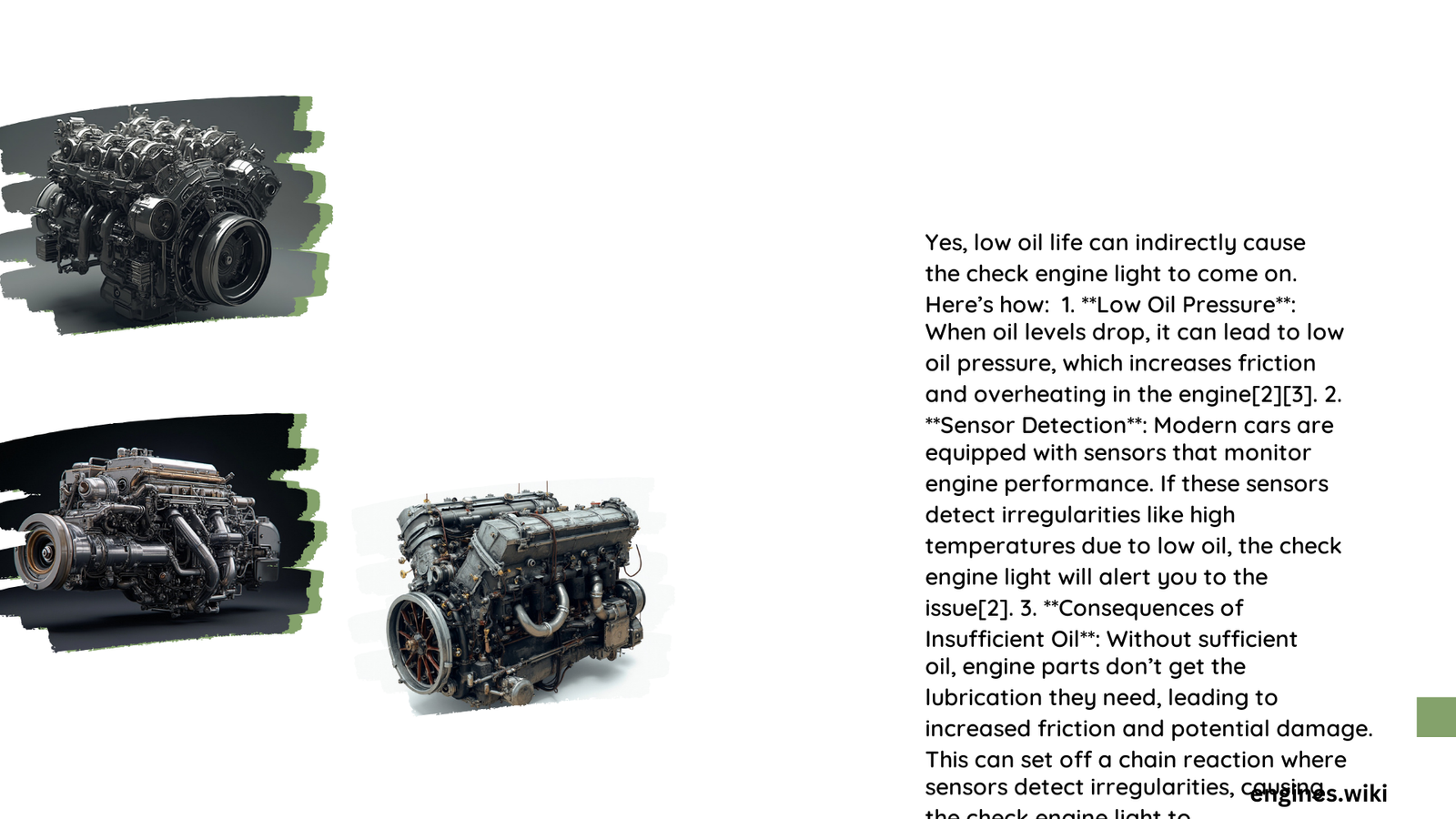Vehicle owners often wonder about the complex relationship between oil life and check engine light activation. While low oil life doesn’t directly trigger the check engine light, it can create underlying conditions that potentially cause sensor warnings and engine performance issues. Understanding the nuanced interactions between oil levels, pressure, and vehicle diagnostics is crucial for maintaining optimal engine health and preventing potential mechanical complications.
What Triggers the Check Engine Light?
The check engine light represents a sophisticated diagnostic system that monitors multiple vehicle parameters. Unlike common misconceptions, it doesn’t automatically illuminate due to low oil life. Instead, specific mechanical or electronic anomalies prompt its activation.
Key Diagnostic Factors
| Diagnostic Trigger | Potential Cause | Likelihood |
|---|---|---|
| Oil Pressure Drop | Low Oil Volume | Medium |
| Sensor Malfunction | Electronic Issues | High |
| Performance Metrics | Friction Increase | Low-Medium |
Can Low Oil Pressure Activate Warning Systems?

Low oil pressure can indeed trigger warning mechanisms, though not necessarily the check engine light directly. When oil pressure drops below critical thresholds (approximately 10 PSI), multiple sensor systems may activate.
Warning Signs to Monitor
- Sudden RPM fluctuations
- Increased engine temperature
- Unusual mechanical noises
- Reduced fuel efficiency
How Oil Life Impacts Engine Performance
Oil life represents more than just volume—it encompasses the lubricant’s degradation and effectiveness. As oil ages, its protective capabilities diminish, potentially creating conditions that stress engine components.
Performance Degradation Stages
- Initial Reduction: Slight decrease in lubrication efficiency
- Intermediate Stage: Increased friction between moving parts
- Critical Stage: Potential sensor activation and performance decline
What Determines Check Engine Light Activation?
Multiple factors contribute to check engine light illumination:
- Onboard diagnostic (OBD) system sensitivity
- Specific vehicle make and model
- Sensor calibration
- Severity of mechanical deviation
Preventative Maintenance Strategies
To minimize unexpected warning lights and potential engine damage:
- Regular oil changes
- Consistent oil level monitoring
- Use manufacturer-recommended oil grades
- Periodic professional diagnostic checks
Technical Insights on Oil Life Sensors
Modern vehicles incorporate sophisticated oil life monitoring systems that track:
- Driving conditions
- Engine temperature variations
- Mileage accumulation
- Oil quality degradation
When to Seek Professional Diagnosis
If your check engine light persists:
- Don’t ignore persistent warnings
- Use diagnostic scanning tools
- Consult certified automotive technicians
- Address potential underlying issues promptly
Potential Repair Cost Spectrum
| Severity Level | Estimated Repair Cost | Potential Damage |
|---|---|---|
| Minor | $100 – $300 | Sensor replacement |
| Moderate | $500 – $1,500 | Component repair |
| Severe | $2,000 – $5,000 | Engine overhaul |
Technical Recommendations
- Maintain oil levels between minimum and maximum markers
- Replace oil according to manufacturer specifications
- Use high-quality lubricants matching vehicle requirements
- Monitor oil life percentage regularly
Pro Tip: While low oil life doesn’t directly cause check engine light activation, it can create conditions that trigger warning systems. Proactive maintenance remains your best defense against potential mechanical complications.
Reference:
– SAE International Oil Monitoring Standards
– ASE Automotive Diagnostic Guidelines
– Society of Automotive Engineers Research
